Solutions for the Future
Volume # 6
Editor:
Jennifer Donovan
Design & Illustration: Michael Lewy
Writers: Rachel VanCott
Jennifer Donovan
Photography credits:
LIDS event, Student Conference and Paths Ahead Symposium photos provided courtesy of the LIDS Photography Committee: Mitra Osqui (chair), Yo Han Kim, Yuan Shen and Ermin Wei. Additional photos taken by Ali Parandehgheibi and Mengdi Wang during the Paths Ahead Symposium. Portraits of Munther Dahleh, Patrick Jaillet and John Tsitsiklis taken by Donna Coveney.
Massachusetts Institute of Technology
Laboratory for Information and Decision Systems
77 Massachusetts Avenue, Room 32-D608
Cambridge, Massachusetts 02139
http://lids.mit.edu/
send questions or comments to lidsmag@mit.edu
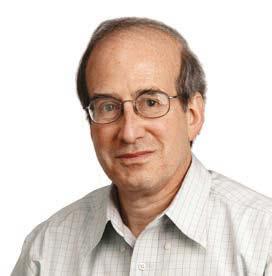
A Message from the Director
Welcome to the Fall 2010 volume of LIDS|ALL. As in past issues, we have assembled a set of interviews and news that provide a picture of the LIDS community in all of its dimensions. The 2009-2010 academic year was a particularly exciting and rewarding time for all of us in LIDS, reinforcing the position of LIDS as a vibrant and world-leading research organization that plays a important intellectual and educational role within MIT. We are delighted to share these glimpses into our professional home.
In this issue you’ll be introduced to two of our current graduate students: Mitra Osqui and Ying Liu. Mitra is one of the most active students within LIDS, taking on very important responsibilities that have been of great value to all in our community. Not only was she one of the co-organizers of the past year’s LIDS Student Conference, she has also established herself as LIDS’ photographer in residence (this included leading a cadre of LIDS members who together provided an extensive photographic view of the very successful LIDS “Paths Ahead” Symposium). Ying has also established himself as an enthusiastic student leader in LIDS during his first two years as an EECS graduate student, taking on responsibilities in numerous areas including the LIDS Student Conference, the LIDS student organization and in the LIDS-CSAIL student-run “Machine Learning Tea” that provides a weekly forum for students and researchers in this broad area.
ABOUT LIDS
The Laboratory for Information and Decision Systems (LIDS) at MIT, established in 1940 as the Servomechanisms Laboratory, currently focuses on four main research areas: communication and networks, control and system theory, optimization, and statistical signal processing. These areas range from basic theoretical studies to a wide array of applications in the communication, computer, control, electronics, and aerospace industries. LIDS is truly an interdisciplinary lab, home to about 100 graduate students and post-doctoral associates from EECS, Aero-Astro, and the School of Management. The intellectual culture at LIDS encourages students, postdocs, and faculty to both develop the conceptual structures of the above system areas and apply these structures to important engineering problems.
In addition, you’ll meet one of our distinguished alumni, Professor Sanjeev Kulkarni. Sanjeev has been on the faculty of the Department of Electrical Engineering at Princeton University since finishing his Ph.D. at MIT, and he remains actively involved in research with many of us.
You’ll also read about Mardavij Roozbehani. After completing his Ph.D. in the Department of Aeronautics and Astronautics at MIT (with LIDS as his intellectual home), Mardavij joined LIDS as a postdoctoral researcher, where he is helping to spearhead efforts within LIDS in energy and smart grids.
In this issue you’ll also find interviews with LIDS’ two Associate Directors, Professors Munther Dahleh and John Tsitsiklis. John and Munther have been of enormous help to me – and to all in LIDS – in enhancing LIDS in many different dimensions. We all owe them our sincere thanks (and wishes that they continue for many years!). We also owe a very big thank you to Jennifer Donovan, Administrative Assistant to the Director. Many of the wonderful activities we’ve had at LIDS – from our Colloquium Series to our social and celebratory events to the extraordinary organization of the “Paths Ahead” Symposium (a bit more on that in a moment) owe their success to Jennifer’s efforts. So, make sure to read the interview with this indispensible member of the LIDS community.
In addition, I’d like to add my word of welcome to the one provided later for Professor Patrick Jaillet, the most recent addition to LIDS’ faculty. Patrick formerly served as the Head of the Department of Civil and Environmental Engineering at MIT, but on stepping down from that position joined both the EECS Department and LIDS. Patrick has also taken on the responsibility of Co-Director of the Operations Research Center. Given the natural and strong ties between LIDS and ORC, this can only be another positive for the LIDS community.
There are many other accomplishments and looks into LIDS activities that you’ll read about in this issue. However, one that I must mention here – because of how successful and important an event it was – is the LIDS Symposium on Paths Ahead in the Science of Information and Decision Systems. This Symposium attracted 340+ attendees and included panels of many of the most important individuals in every area of intellectual inquiry in which LIDS is involved. We continue to receive comments from attendees on how much this meeting added to the sense of a vibrant national and international intellectual community and to the role of LIDS as a catalyst and focal point for much of this intellectual energy.
Sincerely,

Alan Willsky, Director
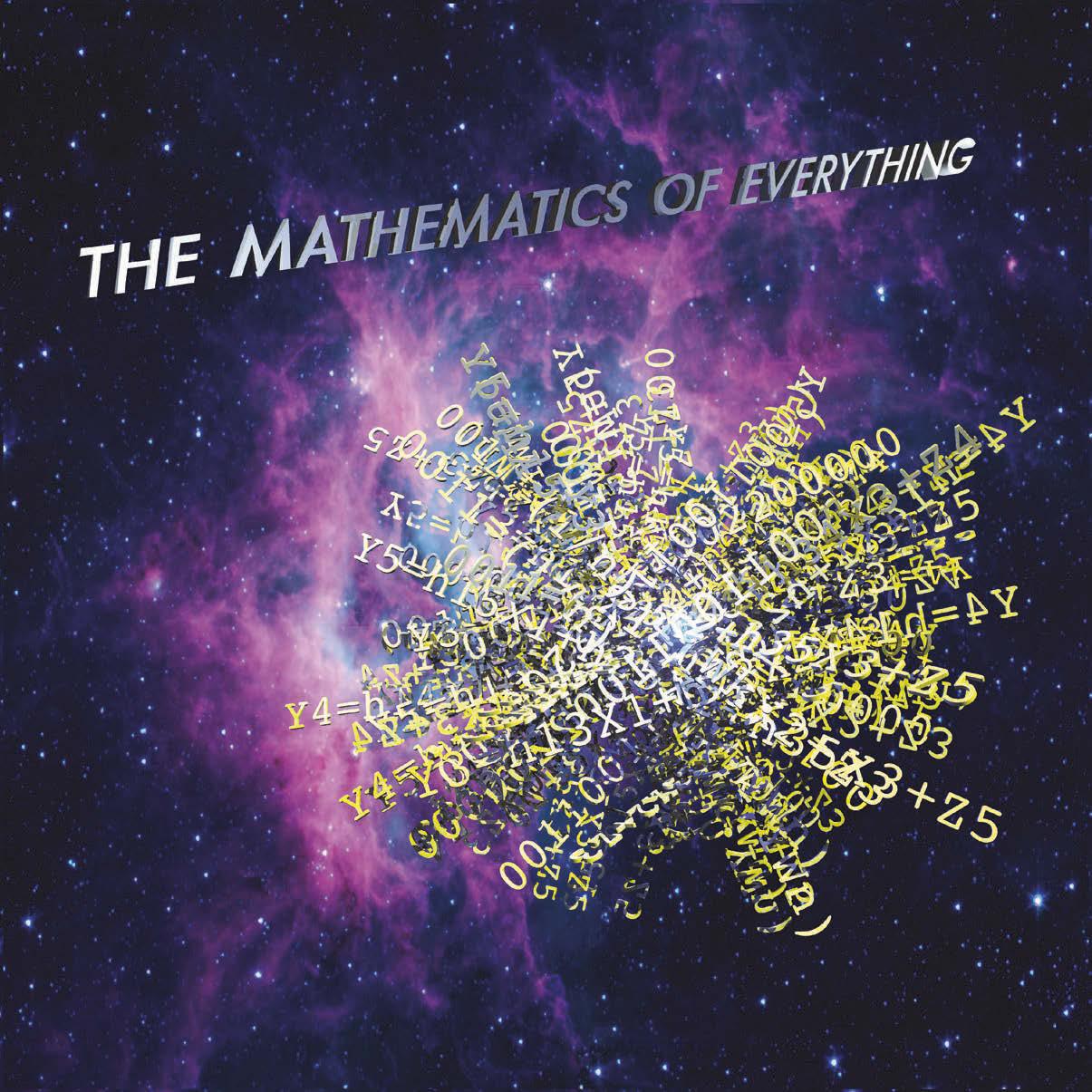
By Rachel VanCott
John Tsitsiklis’ students are getting a degree in “the mathematics of everything,” according to their advisor. By the time John signs off on a graduate thesis, the LIDS Associate Director and professor expects his students to be experts on more than a thesis topic. He wants them to be adept problem solvers—capable of coming up with creative, analytical solutions for all sorts of situations.
John has been at MIT, first as a student and then as a professor, for more than three decades. In the years since he first traveled from Thessaloniki, Greece, to LIDS and MIT, he’s seen the lab’s scope broaden. When he first joined the lab, LIDS researchers focused on applications in areas such as manufacturing, transportation, and aerospace. Now the scholars tackle a broader set of problems that go as far as medicine, neuroscience, and systems biology. Advances in communication technology have increased and accelerated idea sharing across the lab in ways that are both exciting and exacting—John wistfully recalls the time before email interruptions and updates, back when he could spend hours alone in his office working on papers and problems.
But in spite of the interdisciplinary and technical changes that have reshaped the research world, the heart of LIDS is unchanged. Work at LIDS is and has always been about using analytical techniques to solve all kinds of problems, said John, and an amazing variety of problems can benefit from a mathematical approach. For example, imagine a woman who wants to eventually get married. How does she pick the best possible partner? She meets potential mates one after another and has the chance to have a relationship with each. Once she turns down a candidate, she can’t go back. Some of the suitors would be a better match than the others, but she doesn’t know if they will approach her and when. So how can she decide? That realistic (albeit much simplified) dilemma is a classical type of problem in applied probability, known as an “optimal stopping” problem. The woman in the example is trying to solve a complex, timedependent problem, with limited information. (One solution to the problem, by the way, is for the woman to wait until she’s seen a modest fraction of the suitors she expects to meet in her life. At that point, she’ll have a realistic
picture of what an ideal mate would be like, and she can marry the next person that meets or exceeds her criteria for suitability.) “The general thrust of my research is about making decisions when you’re faced with uncertainty,” said John. Industry is full of problems like the challenge of choosing a mate—people are constantly asked to make decisions with limited information. An investor has a certain amount of financial knowledge about his options and a set amount of money to invest. Similar situations are common, from engineering to marketing.
Optimal stopping problems are only one example where people have to make a decision in an uncertain environment. Here’s another scenario that John looked at with one of his students: Suppose you’re a doctor treating a lung cancer patient, and you want to treat the tumor with radiation therapy. You need to damage the tumor as much as you can, and do as little damage as possible to the healthy tissue. In the absence of other factors, you could treat this as a (relatively) simple optimization problem, but there’s an extra element of uncertainty. The patient
will be breathing during the treatment, and that means that the tumor might be moving. Furthermore, you can’t safely assume that the patient will keep breathing in exactly the same way over the course of treatment. How do you adjust the radiation beams to account for the uncertainty? (One answer to this problem involves creating a mathematical model of the uncertainty and working that model into the optimization problem.)
“No matter what the problem is, [my students] should be able to look at it and come up with good models, think about the issues, simplify, and contribute,” said John, “In our lab we’re not really teaching application domain specific skills. But we aim at the high order skill of being able to [ learn] about any problem and contribute useful insights.” John is more concerned about the general process of problem formulation and solution than with any particular application, so the professor gives his students the freedom to set their own direction. Picking out important problems to work on is a key part of graduate education, he said. “Ideally we want the student to come up with the topic and formulate the
problem,” John said. “The biggest challenge in research is to come up with a good and interesting question... one that is neither trivial nor impossible.” The task of finding an approachable and meaningful problem can be agonizing, John admits, but all of his students eventually settle on a topic. One of his students is working on the radiation therapy problem described above. Two others are investigating the best ways for network servers to allocate resources during heavy use. Another is creating a methodology for setting the prices of comparable products in a retail environment. Other students are analyzing various problems of distributed decision making. John currently has ten graduate students in various stages of study. Some are just starting to define the problems they’d like to study, others are working through problems, and one is wrapping up his thesis. After years of one-on-one meetings and study, all of John’s students will graduate and head out to seek new challenges, and the professor will shift his attention to the next group of young minds.
In 2009, John was honored with the “Best Advisor” award from the MIT chapter of
the Association for Computing Machinery/ Institute of Electrical and Electronics Engineers. Some of his former students have gone on to teach at universities all over the world, from Singapore, Greece, and Canada to Berkeley, Stanford, and MIT. Others have gone outside academia to start careers in research labs, NGOs, management consulting or investment banking. Wherever his students go, John said, he’s proud that they emerge from LIDS with the tools to leave their mark on the world in their own creative ways, capitalizing on their analytical skills and mindset.
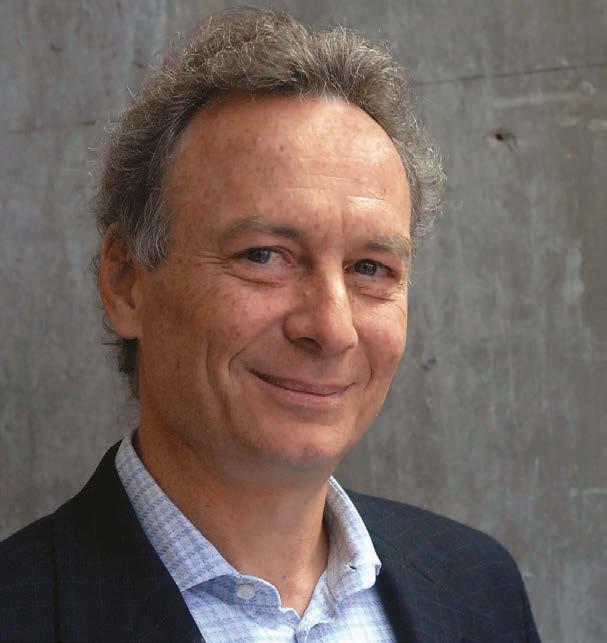
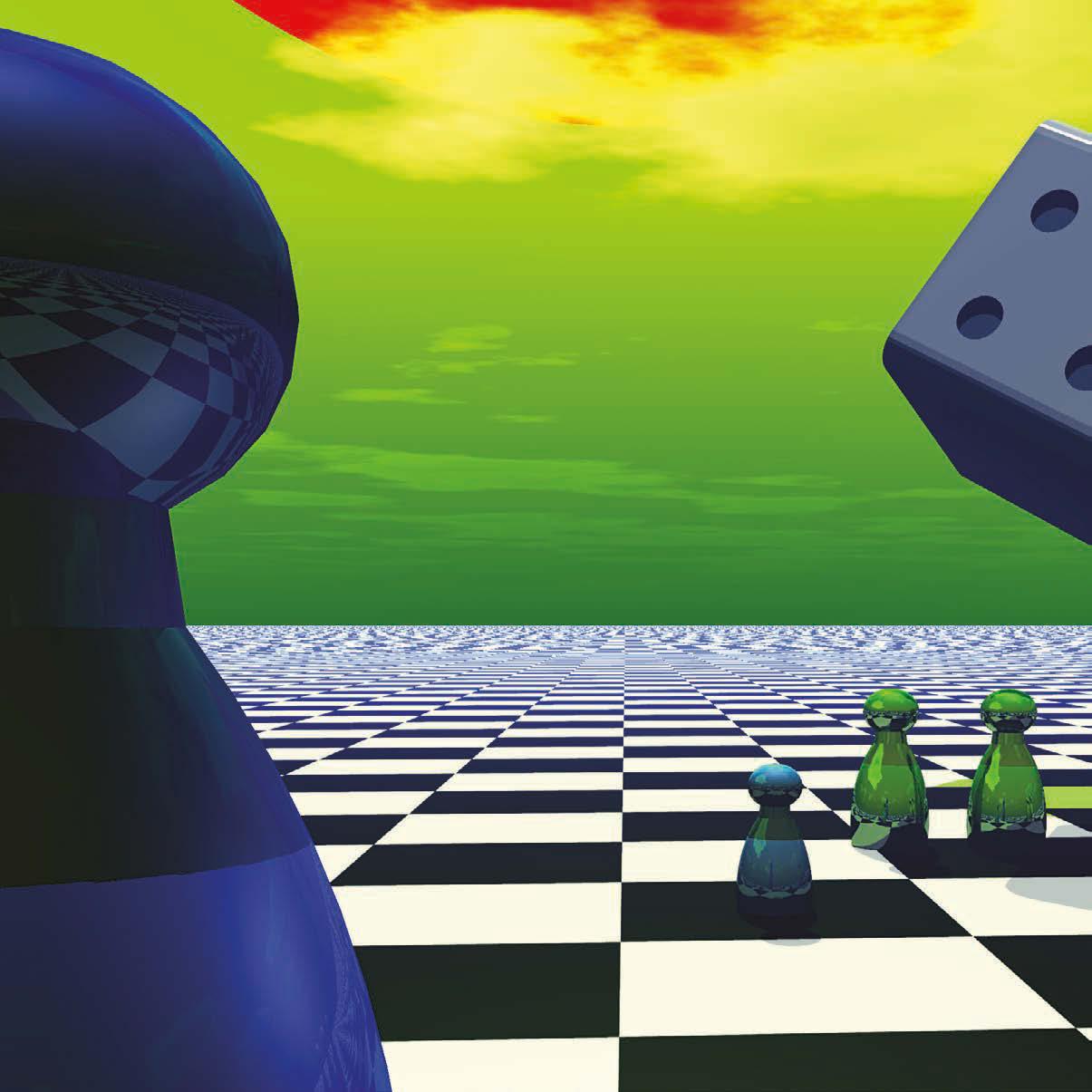
FINDING HIS PLACE IN SCIENCE
By Rachel VanCott

When Ying Liu was in middle school, physics was his favorite subject. So he naturally took part in the province-wide Physics competition near his hometown in China. The competition was a set of challenging written exams full of interesting questions, Ying said, and when it was all over, he had the highest score of all the students in Shangdong Province. He didn’t realize it then, but when he won that competition, Ying took a definite step toward his future in science. After the competition and another round of selection examinations, Ying was picked to be part of a experimental high-school program in Beijing that offered a targeted science education. He had access to university classes, and he didn't have to worry about preparing for the stressful national college entrance exam. So while the other students in his age group feverishly studied for a test that would determine the course of their years at university, Ying was encouraged to pursue his scientific interests. When he was admitted to Tsinghua University, Ying decided to study electrical engineering, in part because it was a mixture of his favorite, familiar high school subjects: physics and mathematics.
Now that he's a graduate student working towards his PhD at LIDS, Ying has an arsenal of more specific, technical phrases to describe what occupies his mind. He's currently working on solving “inference in Gaussian graphical models”. More plainly, Ying and researchers like him are trying to use mathematics to describe real-world systems, so that they can make estimations and predictions. It sounds like a straightforward idea, and in some cases it is—the way a ball falls to earth after it's thrown, for example, can be illustrated by plugging variables into a relatively simple set of formulas. But for more complicated scenarios, researchers don't have a simple equation to explain what's going on. In those situations, they need to create probabilistic graphical models to describe how the system operates— nodes represent variables, and edges between nodes represent their dependencies. Some edges are linked to just one other node. Others are linked to a large number of neighboring
nodes. To retrieve useful information from the graphical models, messages start at one node and are passed around the graph through edges until the process produces an answer. This approach is called belief propagation. However, this distributed approach might not work if the graph contains loops—where messages may change and circulate forever. If that’s the case, the system never gets to a stopping point, or the final answer. Ying's research offers a solution for that specific problem. His work proposes a method called feedback message passing, which identifies a set of special nodes that are responsible for these never-ending cycles. A specific messagepassing scheme is used for these nodes while other common nodes use the standard belief propagation. By carefully selecting the set of special nodes accurate solutions can be obtained. This work has the potential to provide a new way to find a solution in a field where researchers are always looking for a
“I wanted to come to MIT and see how great research happens...”
better way to predict more accurate solutions to inherently complex problems. This makes Ying part of the community of researchers that are constantly engineering new ways to look at the world.
But Ying couldn't always see how he fit into the world of scientific research. Back in his early undergraduate years, he wasn't sure if and how he'd be able to contribute to the scientific community. It wasn't on his radar yet. He loved learning and uncovering new ideas, but didn’t really know how to get down to research. “In my early undergrad years, I don't think I specifically tried to do research because I—well as long as you have some good things to learn and you feel like you are improving every day, you are very happy.”
Ying said. Thanks to the rigorous program in Tsinghua University, Ying gradually built up his knowledge base. However, the textbooks that Ying studied were authoritative, and he didn't have much exposure to current scientific research or papers. So he didn't see the process and papers behind the theories that he was being taught. But when he participated in a semester-long undergraduate exchange program in Hong Kong, something came
together in his mind. “The professors gave us material, a link to a paper, many good references... I think that was my first time to read an academic paper.” Suddenly, it clicked.
The ideas contained within textbooks weren't incontrovertible rules. They were constantly evolving theories. Now Ying recognizes science as the product of real researchers who pushed the boundaries of knowledge and tried new techniques. That idea of science—as the everchanging product of a vibrant community of researchers—sounded like something he could work with. After Ying returned to Tsinghua University, he immediately participated in an extracurricular research project of automatic video scene retrieval, giving him the chance to formulate some of his first real research problems. That's also when he decided to apply to a PhD program. If you can explore and explain even a small problem, said Ying, you give everyone a chance to understand the world just a bit better. “I wanted to come to MIT and see how great research happens, how things are converted into part of the human heritage,” said Ying.
He's happy with his choice and the experiences that he's had since then. He particularly values
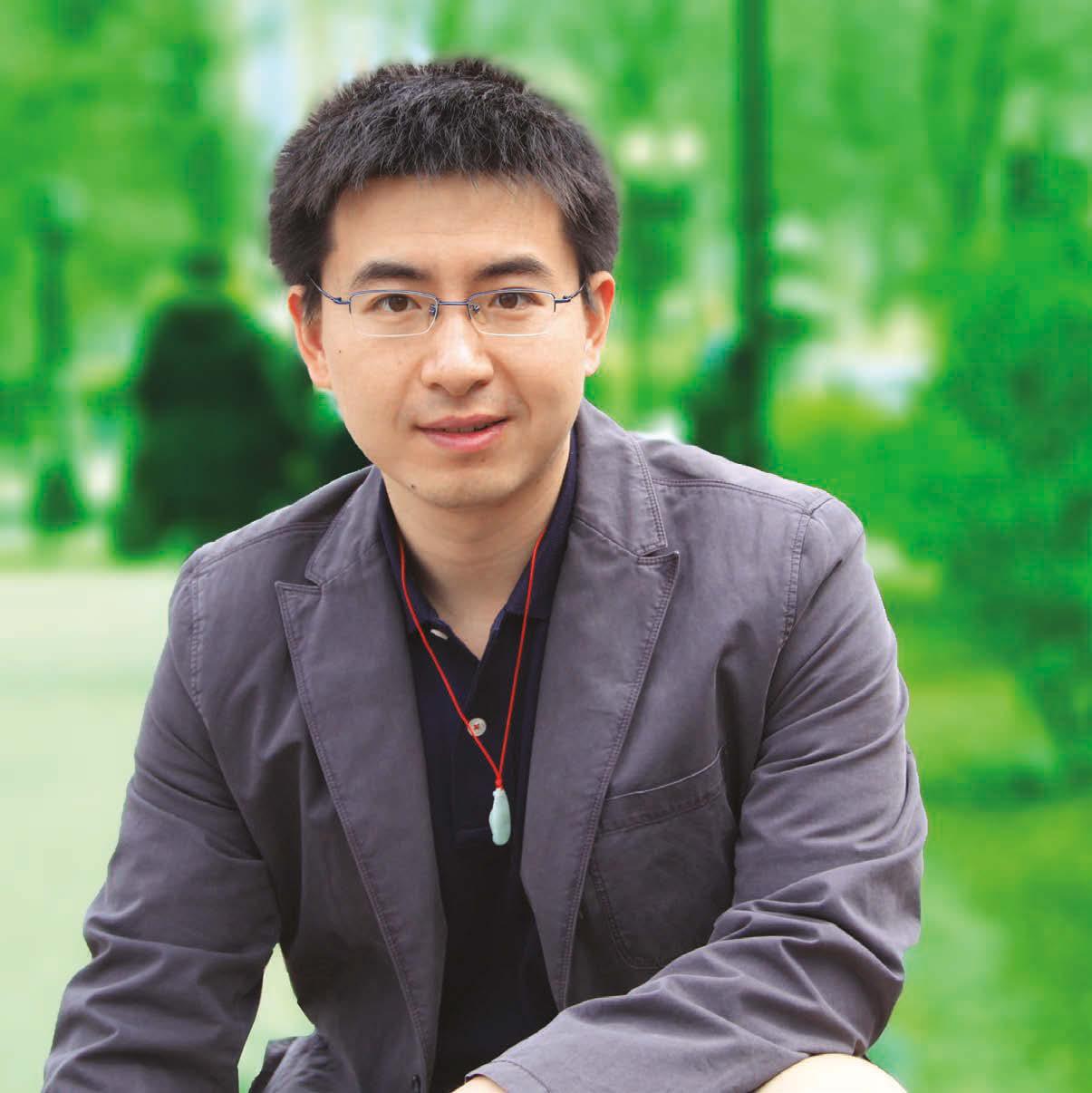
working with his advisor, LIDS director Alan Willsky. Willsky, Ying said, is a brilliant mentor. “In my first group meeting, it was my first time explaining research in English, so I was worried that Alan wouldn't be able to understand me,” said Ying, “but he understood me very well, not because my English was good, but because he's quick at thinking.” The Stochastic Systems Group that Ying works in is split into sub-groups of two or three researchers who are working on closely related topics. Those “grouplets” meet with Professor Willsky every week. “I think it's a good balance of individual meeting and big group meeting. In a big group meeting you cannot get other people's attention... the time is not efficiently used. If it's an individual meeting you'll never know what other people are thinking, how they are doing their research,” said Ying, “In the form of grouplets, we are making a very good trade-off.”
Outside of work, Ying spends recreational time with his friends both in and outside his research group. They hit the gym together, or play ping-pong on the game table just outside the lab. The rich community is one of the best things about working at LIDS, Ying
said. When you're working on incredibly complex problems, sooner or later everyone gets stuck. And when you do, you need a supportive community of your peers to prod you in new directions. “I still remember in the first summer, right after the academic year, I was trying to get the main point of my master's thesis for a whole three months and I didn't solve anything,” Ying said. He wrestled with the research topic for months and then, in one afternoon, he suddenly recognized the main point. Ying's not sure how he would have made it through those rough months without his friends. “People around you help you pass the difficult times...when you need some encouragement or help to discipline yourself, to care about some new ideas. That's the great part of MIT,” said Ying, “When you get stuck on something, you can talk to people. They may not help you directly solve the problem, but they can help you explore various directions one by one.” For now Ying's putting his energy into completing his master thesis and connecting his work to various applications. After the master thesis is done, Ying will move on to his PhD work. It's hard to see where he's headed after that, he says, “but I always have academia in my mind.”
Solutions for the Future
By Rachel VanCott

When the sun sets on MIT and the Stata Center casts its angular shadow over east campus, most professors head home and leave MIT to the students. But LIDS professor Munther Dahleh doesn’t shy away from campus life. He and his wife are housemasters at MacGregor dormitory, where they’ve lived with their children for more than a decade. At home, just a few blocks from the lab, Munther has to juggle dorm and family responsibilities, and sometimes his work gets pushed into the wee hours of the night. But the forward-thinking professor uses this opportunity to stay in touch with the undergraduate students, and he’s grateful for the experience. In the absence of other forces, a university population tends to form social groups according to convenience, said Munther. Graduate students band together with other people from their labs, and professors form the strongest bonds with the masters and PhD and students that they supervise and interact with very frequently. Unless a professor has a house affiliation or some other connection to the undergraduates, he or she might never see the students outside of class. Making the effort to be a part of both communities pays off, Munther said, “It has
given me a complete experience of being at MIT. It impacted the way I teach. It impacted the way I approach students with problems...I mean you assign the homework in the day and you see them working on it in the evening and that gives you a whole perspective on what you should expect. MIT is not an easy place.”
Munther is sympathetic to the plight of overworked undergraduates, but that compassion doesn’t seem to stem from any experience he had as a student. He describes his early studies in terms of chasing his love of mathematics, and his transformation from student to researcher and professor only picked up speed when he entered graduate school. “I always wanted to get a PhD,” said Munther, whose Palestinian upbringing stressed the value of education, “I loved teaching. I loved being with other students. I loved the process of doing research. Learning ideas that I didn’t know, reading about them. Every day was enjoyable. I didn’t feel the stress... it kind of fell in the right place for me.” Soon after he graduated with a PhD in Electrical Engineering from Rice University, in Texas, Munther received an offer to join MIT as an
Assistant Professor, as part of LIDS. “I liked the people and the place,” said Munther with a smile, “and it’s hard to turn down MIT.”
Now, Munther gets to do what he likes best— teaching and conducting research. Like most of the researchers at LIDS, Munther isn’t concerned with one specific sub-field or application. Instead, he works on an unusual subset of problems—the kind of problems that might show up a decade or so from now. “Industry has a lot of immediate problems that need to be solved,” admitted Munther, “But the problems that are five or ten years ahead are more open-ended than that. These create new research directions whose impact is realized many years in the future.”
The challenge of creating a smart electrical grid is one that fits neatly into Munther’s interests. Right now, most of us get our power from conventional energy sources, like gas, coal and oil. They provide a very steady stream of power. But those resources will eventually be replaced or augmented by clean renewable energy sources, like wind and solar power that are distributed in nature. Unfortunately, wind
“The problems that are five or ten years ahead...create new research directions whose impact is realized many years into the future.”
and solar power systems don’t produce the same consistent power supply--the electricity production rises and falls as the wind or sunlight does. If we wanted to use renewable energy on a large scale, we’d need some kind of “smart” grid—a system that’s capable of reacting to supply and demand, routing power as needed, and managing energy prices to keep the lights on and life as we know it humming along. For now, we don’t have enough clean, green, power sources, nor the physical infrastructure for a smart grid. It’s an ideal time for Munther to take a look at the issue and define the best way forward. So he’s getting started on collaborations with students and economists from MIT thinking about the complicated problem and the economics of trying to restructure the electricity market into a sustainable shape for the future. The
emergence of new smart sensors and actuators can enable a truly dynamic electricity market relying on real-time management of both supply and demand.
Another of Munther’s projects is bound to become more prominent in the coming years. He and some colleagues, along with a group of graduate students, are looking into how online social networks influence decision-making. Decisions travel through social networks, Munther said. For instance, when one or all of your friends buy a certain product, the odds that you’ll buy the same item changes. But how exactly does that social influence kick in over the internet? Do good decisions travel more effectively through the system than bad, or can a few bad choices in just the right (or wrong) time and place cause everyone to make a bad decision? A choice about whether or not to purchase an item is one of the simplest cases of social decision-making, Munther said. In order to investigate that straightforward case, he and his colleagues create a mathematical model that describes an online social group— the individual nodes in the network act in a way that is programmed to be similar to actual
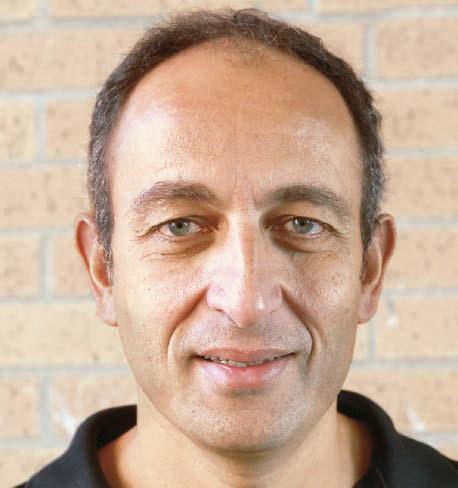
users. Once the researchers have created the test network, they can start the simulation and offer an item for purchase. As each “member” of the group decides whether or not to buy the object, the next member node uses her private information and the decisions made by other members of the group to make her choice. One can both analyze and simulate such a model and show what types of networks and private information are necessary for learning. Decision-making over social networks is interesting on its own, but the system is also part of a larger type of problem often found in networked robotics and control systems, known as distributed decision-making—a situation in which each member of a group
makes a small choice which is part of a larger decision. “Social networks are a small, but exciting, part of distributed decision-making over networks,” said Munther, and he’s interested in developing his understanding of the general problem.
“I think this is my life—being in research and working with my students,” said Munther. But even a job that feels like a calling comes with challenges. “Research itself is challenging, but that’s why we do it. The problems that are hard are not an issue. But balancing everything, balancing between research and teaching, committees, mentoring junior colleagues, and supervising students, and then external things like consulting and so forth... A lot of the days are chopped into back and allow yourself to consolidate these pieces. Otherwise you’ll feel overwhelmed. I’ve learned over the years how to limit my responsibilities, not to take on more than I can handle. Not to over promise things that I cannot do,” says Munther, “and yet I find myself all the time drawn to everything.”
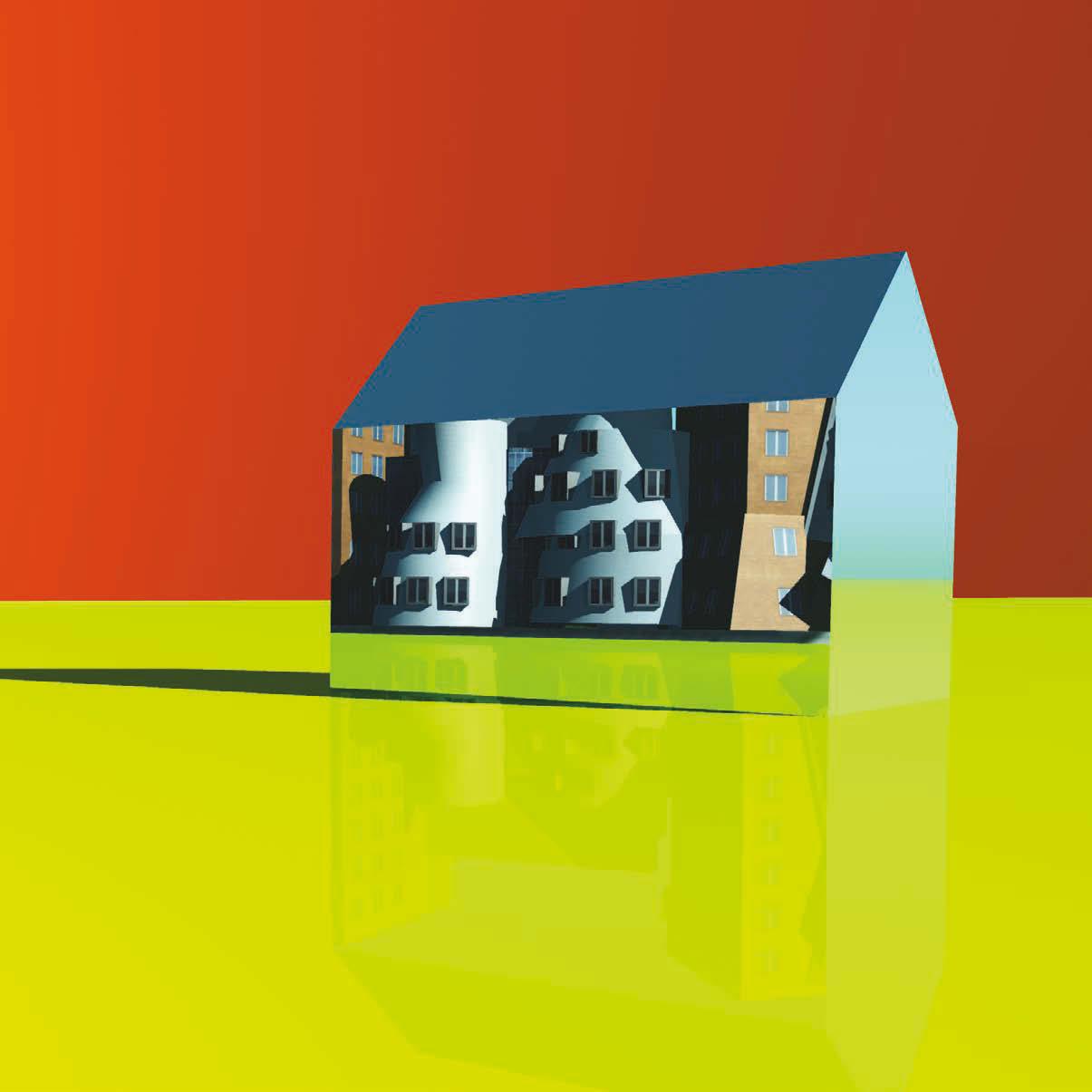
At Home in LIDS
By Rachel VanCott
Mitra Osqui tried her best to keep an open mind when she visited graduate schools in the greater Boston area. The young electrical engineer had just been awarded a fellowship, and now all she had to do was find a graduate degree program, and get accepted. Boston is full of great universities, Mitra said, but the instant she saw the grand columns and lofty dome of 77 Massachusetts Avenue, her search was over. She was in love. “I applied only to MIT,” said Mitra, “I just didn’t want to go anywhere else, and I didn’t care.” Years later, she would look back and appreciate that while many people want to study at MIT, most of them have a back-up plan or two. But the energetic engineer had already racked up a list of accomplishments that justified her confidence. She’d finished college at age seventeen, and was recognized by “The Guinness Book of World Records” as the youngest person to graduate with a Bachelor of Science in Electrical Engineering. After graduating, she went on to work in industry and by the time she was shopping around for a graduate program, Mitra was a Senior Electrical Engineer at Raytheon, a defense technology company. As she’d hoped, Mitra’s
single-application gamble paid off. She was accepted to the Microsystems Technology Laboratory at MIT. Although she applied for and was accepted to the Ph.D. program, Mitra had to head back to her job at Raytheon for two years after finishing her master’s degree, as a condition of the fellowship. “I actually didn’t want to leave school and go back [to work],” she said, “but of course I didn’t have a choice. I was very sad to leave and unbelievably happy to come back.”
When she returned to MIT, Mitra decided to shift her focus. As a master’s student, she’d done work that was experimental in nature, and she found herself longing to switch to theory. She wanted to spend her hours steeped in more abstract engineering problems that required mathematical rigor and intuitive thinking. So she set out to find a new problem to study and a research environment that would allow and encourage her to pursue her interests freely. Eventually, at the suggestion of her husband and colleague, then LIDS student and now research scientist Mardavij Roozbehani, Mitra found what looked like the perfect topic, tucked away in a textbook of unsolved
problems. She’d been interested in the topic of analog to digital conversion ever since she encountered the subject as a master’s student. But until Mardavij suggested it, Mitra hadn’t run into the interesting control-theoretic interpretation presented in the book. Mitra took the idea to LIDS professor Alexandre Megretski, who was one of the editors of the textbook. Professor Megretski was happy to learn of her interest and he brought Mitra to LIDS as a Ph.D. student. The problem that Mitra is captivated by—frequency selective analog to digital conversion—has a wide range of applications. “Any digital electronic system that interacts with an analog environment requires an Analog to Digital Converter,” said Mitra. Audio/video and music applications, communication devices, and data conversion/ storage systems all rely on signal converters. But every time an analog signal is converted into a digital one, some of the information is inherently lost in the process. Mitra is working on finding a methodology for designing an optimal conversion process—she wants to create the steps to make a scheme that will minimize the amount of data that gets lost during the conversion. The problem that she’s
working on can be approached in many ways, Mitra said, but it hasn’t been treated in an optimal feedback control framework before. She’s hopeful that her work will produce a novel optimal design and, she says, working with this kind of a complex theoretical system is just plain fun.
Mitra fits right in at LIDS, where theory is the cornerstone of everything the scholars do, and all her colleagues share her enthusiasm for tough, analytical work: After all these years, she’s still in love with MIT, and she loves the intellectual fit she’s found at LIDS. She reports that Professor Megretski is “very generous with his time and very patient. He’s a wonderful and an amazing advisor, he really deeply cares about his students.” Even the long hours that are often a requirement of graduate work don’t seem to dampen her cheer. She comes to the lab in the mornings, and leaves late in the evening and occasionally, she says, “I stay very late.” On those days when she comes in early and stays very late, Mitra doesn’t feel discouraged. She’s part of a community where everyone works hard. The memory of being in the lab until two-thirty in
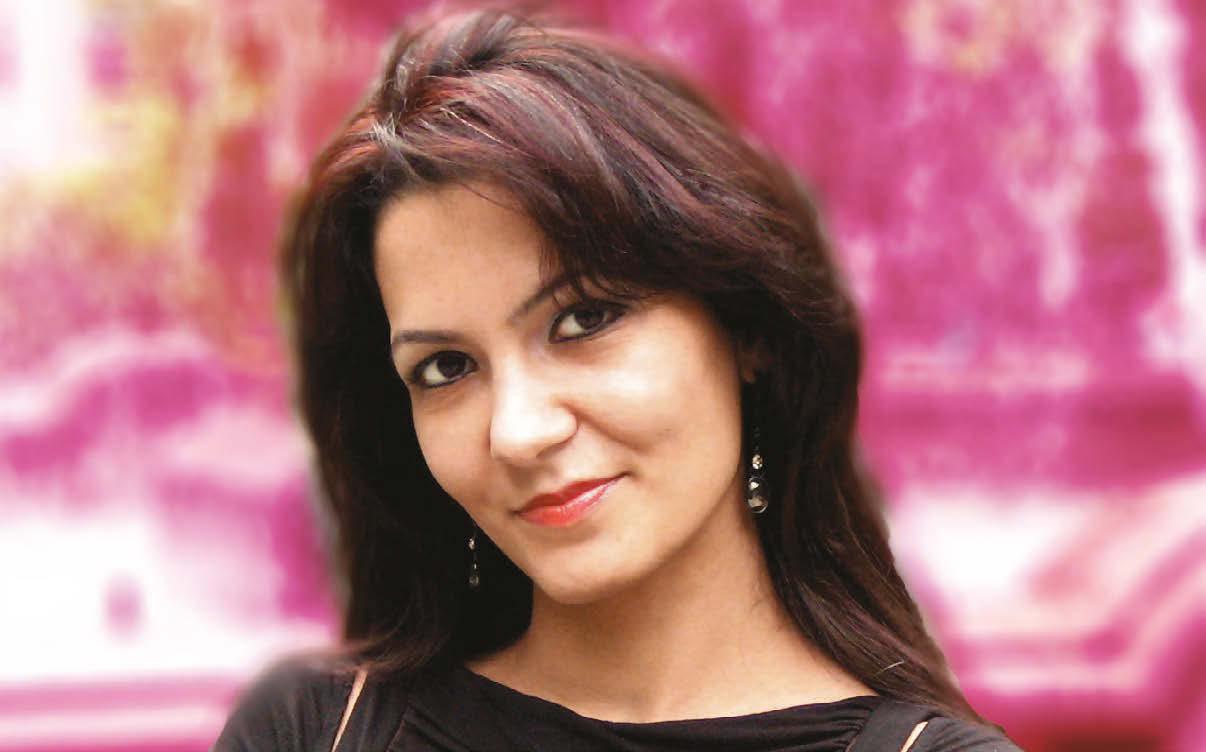
the morning one night, working up against a deadline to submit a paper for an upcoming conference, made her smile.
“The cool thing was that a few other LIDS people were here too,” she laughed, “We were all submitting to the same conference. It’s 2:30 AM and you see your colleagues here.” Mitra says she’s motivated by her desire to get her
Ph.D., something that has been an educational goal of hers since she was in high school. She has about a year and a half of work left on her Ph.D. thesis, and after that Mitra has another challenging plan in store for herself. “My goal further down the road is that I want to be faculty,” said Mitra, “Actually, I’d love to be faculty at LIDS. That’s my dream.”
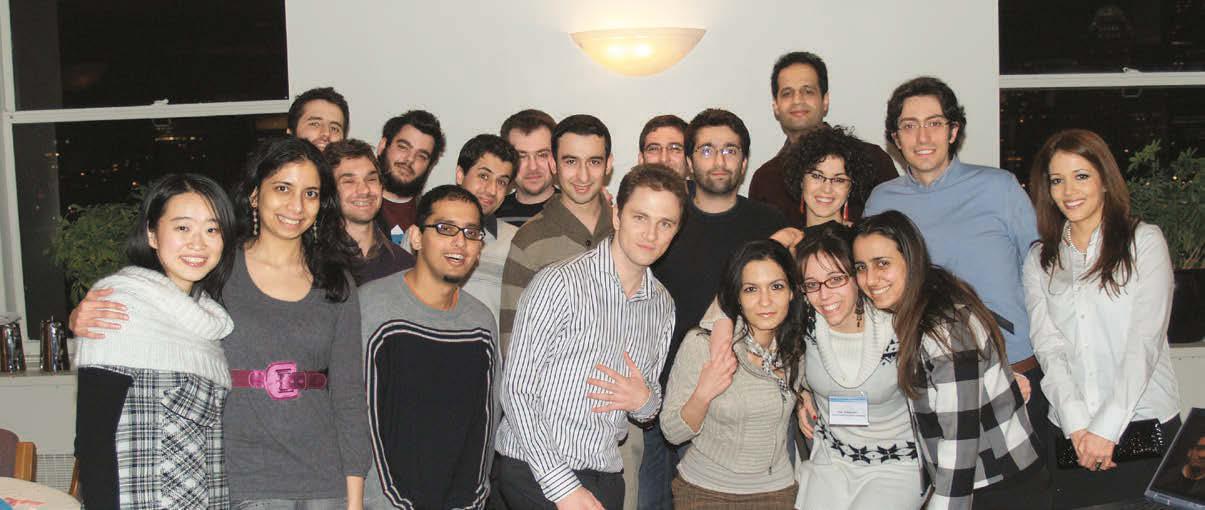
2010 LIDS Student Conference
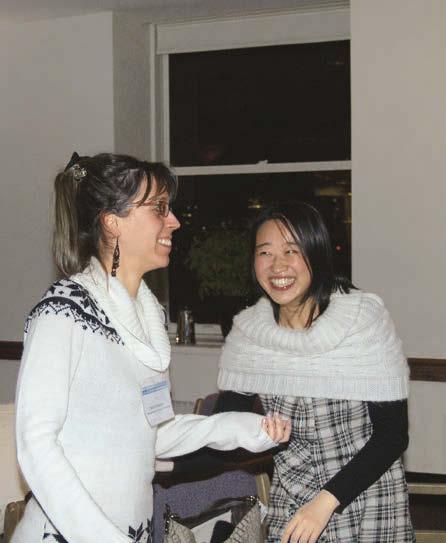
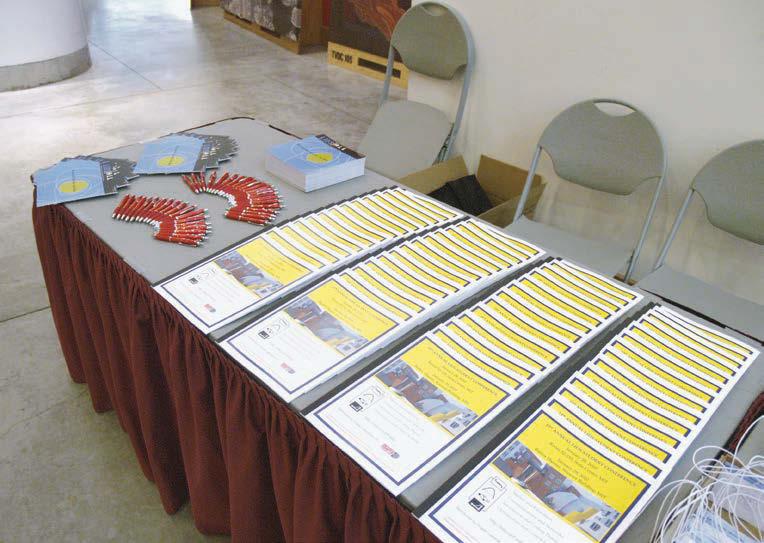
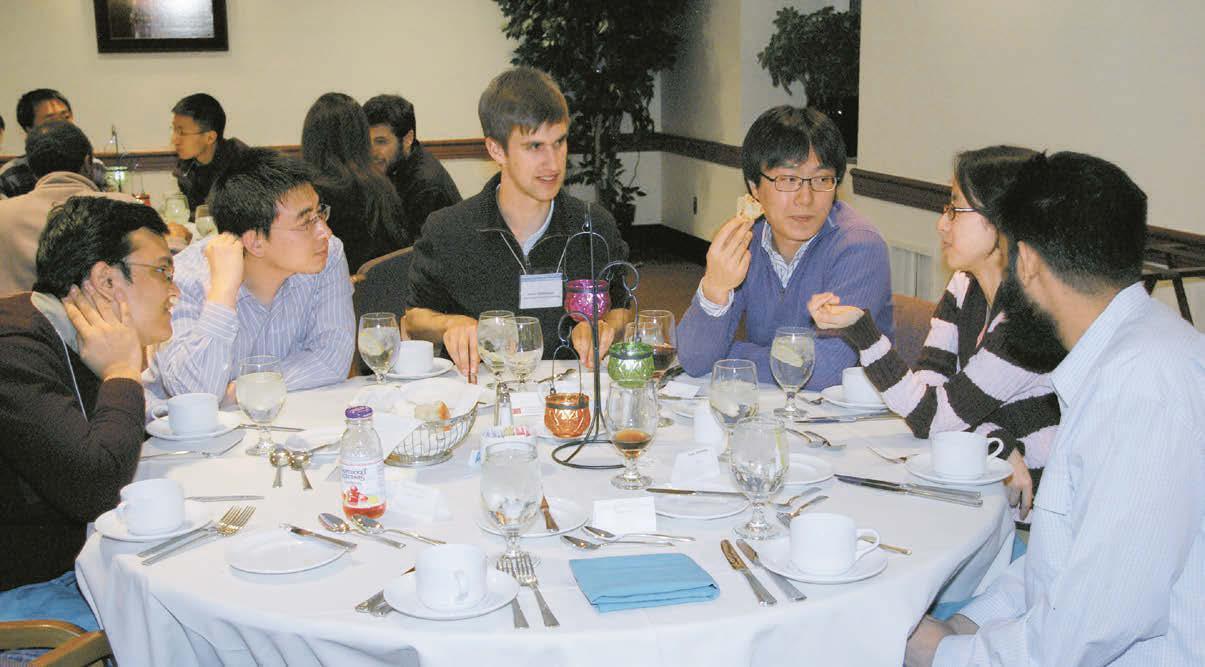
ORGANIZING COMMITTEE
General Chairs
Ulric Ferner
Mitra Osqui
Steering Committee
Chung Chan
Sertac Karaman
Yola Katsargyri
William Weiliang Li
Ying Liu
Brandon Luders
Paul Njoroge
Yuan Shen
Vincent Tan
Emin Wei
Kuang Xu
SPEAKERS
Brad Bond
Prof. Roger Brockett
Utku Ozan Candogan
Venkat Chandar
Venkat Chandrasekaran
Prof. Mung Chiang
Myung Jin Choi
Prof. Maryam Fazel
Alborz Geramifard
Srikanth Jagabathula
Peter Jones
Greg Kuperman
William Weilang Li
Brandon Luders
Mihalis Markakis
Prof. Sanjoy Mitter
Alexander Olshevsky
Pedro Pinto
Shreevatsa R
Jinwoo Shin
Noah Stein
Prof. Russ Tedrake
Prof. John Tsitsiklis
Kush R. Varshney
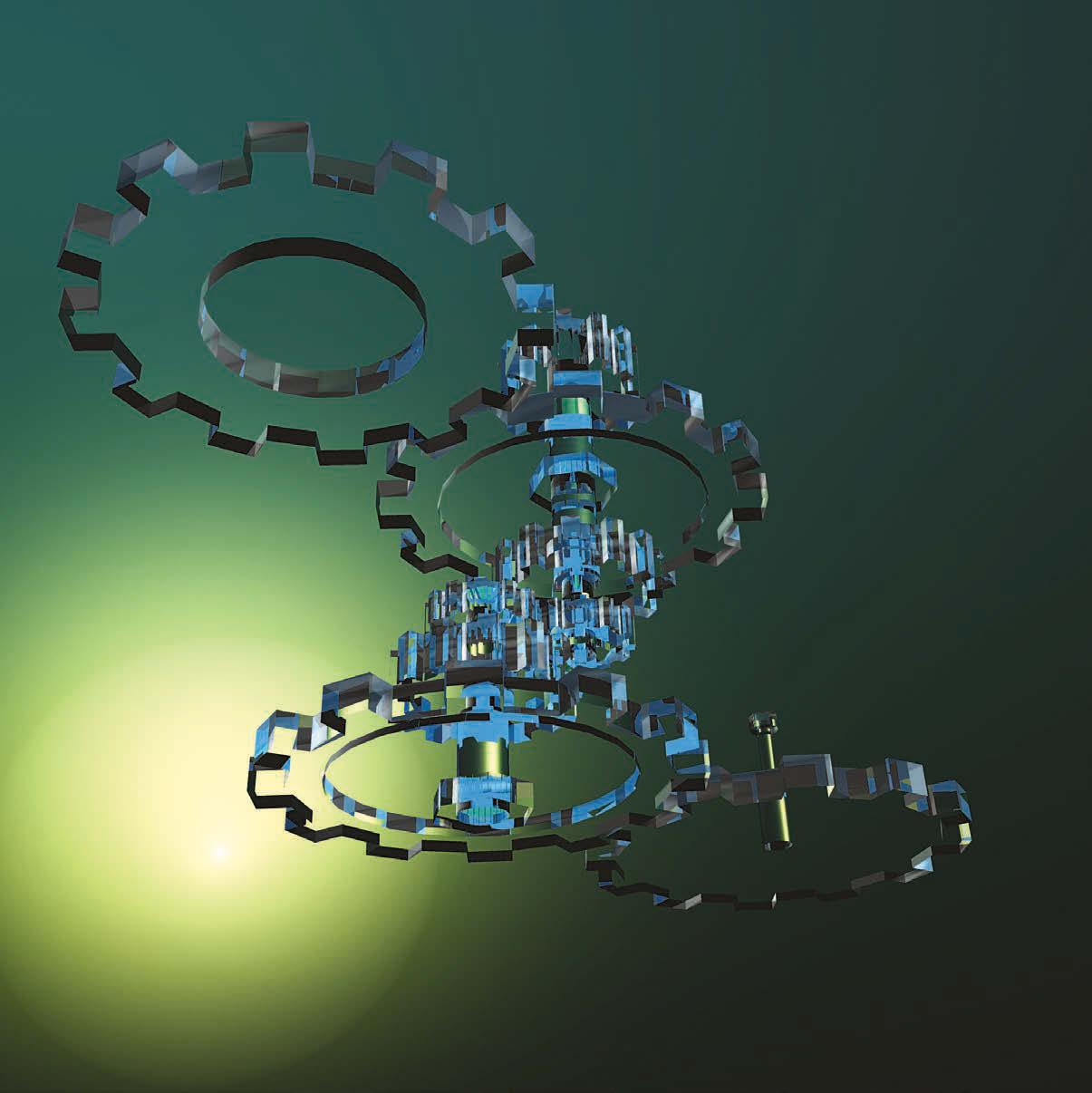
THE THEORETICAL ENGINEER
By Rachel VanCott
During the last session of the last day of the LIDS Paths Ahead Symposium, Sanjeev Kulkarni stepped up to the podium. The Kirsch Auditorium was full of current and former LIDS students, researchers, and professors from the Laboratory—all interested in discussing the future of research in information and decision systems. Sanjeev, a LIDS graduate and current professor of electrical engineering at Princeton University, gave a brief talk on some suggested next steps in problems of estimation, inference, and learning. As he finished reading the summary on the final slide of his presentation, a smile crept into Sanjeev’s voice. “The last point I want to make is already up here,” Sanjeev said, referring to the projection screen behind him, “But you’d need some pattern recognition to notice it.” As he spoke, the first letter of each line on the summary slide grew larger and flashed red, spelling out SANJOY—the first name of the man who had been Sanjeev’s academic advisor when he studied at LIDS more than twenty years ago. The audience burst into laughter. “I can’t help but take this as an opportunity to express my gratitude for Sanjoy and all he’s done,” said Sanjeev. Animated
fireworks burst onto the screen, eliciting another peal of laughter as the virtual explosions framed a picture of Sanjoy Mitter. “I had the good fortune to have Sanjoy as an advisor, and over the years he’s had a profound impact on my intellectual outlook, as an advisor, mentor, and as a friend.” His former advisor officially retired in 2009, but Sanjeev is still benefiting from and expanding on ideas that he encountered under Sanjoy’s mentorship. Thanks to his experience at LIDS, the senior professor from Princeton finds interesting mathematical challenges everywhere he looks.
When he first came to MIT, Sanjeev was working as a researcher at Lincoln Laboratory. By the time he decided to complete a Ph.D. at the Institute, he had full financial support from Lincoln. Sanjeev was free to find a lab that fit his interests, rather than worrying about who had funding. “I think that I was drawn to LIDS because of the style of work,” said Sanjeev, “I like understanding a problem very fundamentally and generally if possible. And yet I like to be grounded in application. I’m not a pure mathematician. I’m sort of a…theoretical engineer, if you will. LIDS was the natural
home for me.” Working with Sanjoy, Sanjeev said, was also a natural choice. Both student and professor were drawn to the beauty of theoretical formulation and driven by the challenge of creating targeted solutions for specific applications. Sanjeev’s thesis grew into a col-
“I’m just drawn to the beauty of some theoretical formulation because it’s interesting in and of itself— mathematically it’s elegant...”
lection of ideas and papers on computer vision and machine learning—two topic areas that were the subject of much attention at the time. “The nice thing about Sanjoy was that he was supportive of almost anything as long as it was meaningful, deep, and a new contribution,” said Sanjeev. “Sometimes the best theoretical problems come from trying to understand an application,” said Sanjeev. “[Other times] I’m just drawn to the beauty of some theoretical formulation because it’s interesting in and of itself—mathematically it’s elegant... Sometimes [solutions to those elegant problems] find lots of applications. Sometimes not right away, sometimes decades or even a hundred years later.”
But as a professor Sanjeev said he’s able to take the long view on such issues. He doesn’t have to produce results in the next quarter. Instead, he contributes mathematically interesting solutions and draws connections within his field and between his discipline and other areas of study: He taught a course for the Operations Research and Financial Engineering department and collaborated with Princeton philosopher Gilbert Harman on a course on machine learning and epistemology. In his
own lab, Sanjeev is working on a number of projects, but most recently he’s been wrestling with understanding the inner workings of distributed systems. Distributed systems come in all shapes and sizes—communication networks, sensor networks, and even social networks. Sanjeev has been working with the psychology department at Princeton to understand more about how distributed decision-making works in human systems. “There are often problems in aggregating judgments from human experts,” said Sanjeev, “They usually disagree. Sometimes these experts aren’t even coherent within their own statements—they assign probabilities to events that don’t satisfy the laws of probability. And yet they have useful information. So how do you extract wisdom from crowds?” Traditionally, decision makers might ask a panel of experts to make predictions about the probability of certain events occurring in a complex situation. For example, what if a decision maker asked a panel of experts to predict the chance that there will be a decline in surface water quality, or the extinction of certain wetland species, if the sea level rises by a certain amount. If the experts all respond
with mathematically coherent answers to all the questions—if they all answer the question with a simple number—a decision maker can average the results and understand the advice of the expert panel. But if any of the experts decide that they can’t answer all of the questions, or if they offer probabilities that don’t add up, simply averaging the answers won’t work. Sanjeev and his collaborators created a mathematical tool that builds on previous work in the field. The method offers a more versatile approach to aggregating the opinions of an expert panel, even in a scenario where members of the panel offer incomplete answers. Constraints—like incomplete information and nonsensical answers in the case of decision aggregation, or power, time, and computational limitations—make simple examples into complicated, interesting ones, said Sanjeev. Working within the bounds of those restrictions also moves the problem out of the idealized realm of infinite resources and unrealistic expectations and into the world of useful applications.
“One of the hardest parts of research is formulating the right question—questions that
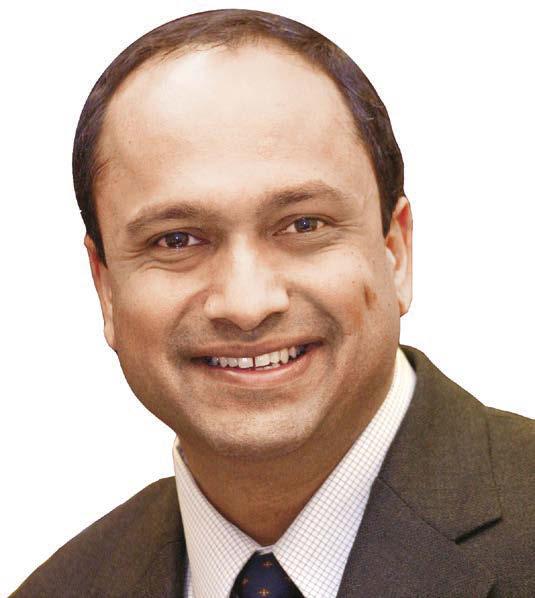
are deep, meaningful, will be a contribution, but that you can make some headway on,” said Sanjeev, “If you ask the right questions then usually good things will follow.”
Finding the time to shoulder all of the responsibilities associated with being a professor, researcher, and mentor is also a challenge. But, just as in the case of toiling away at a difficult but meaningful problem, good things follow from putting work into your students. “At the beginning, they don’t have a real sense of what this whole enterprise is about, or how
to do research. By the end, they’re leaving as colleagues. … I love it when a student is about to graduate, or is in the last year of their Ph.D. program,” said Sanjeev, “By that point they’re coming to me and saying, ‘Hey I just found this interesting paper. Here’s what I think is an interesting problem. What do you think?’” Seeing researchers make that transition from student to colleague is incredibly rewarding, and Sanjeev can’t help but connect that to his own experience, when he was developing as a young academic in the invigorating LIDS environment. “We would often eat lunch in the reading room, surrounded by LIDS technical reports,” Sanjeev recalled, “Once in a while, if no one else was in there, I’d wander around and pick up some of [the reports] and just see really interesting work. You’d see names that you’d recognize. Names you know passed through there. A lot of the interactions, and often the most meaningful ones, just happened as a matter of course. It’s not preplanned. You just bump into someone, have a conversation and it leads to something interesting...If you apply yourself and enjoy yourself you’ll get something really profound out of your LIDS experience.”
LIDS Welcomes Patrick Jaillet!
It is with great enthusiasm that we welcome Professor Patrick Jaillet to LIDS. Patrick received his PhD from MIT in Operations Research, and for some time was on the faculty at École Nationale de Ponts et Chaussée in Paris. Subsequently he held the position of Professor at the University of Texas Austin (from 1991 to 2002), where he co-founded and was director of UT’s Center for Computation Finance. He then returned to MIT as the Edmund K. Turner Professor and Head of the Department of Civil and Environmental Engineering, a position he held from 20022009. In 2010 Patrick took on the additional role of Co-Director of the Operations Research Center. Patrick’s research interests in dynamic optimization and networks are perfect matches to the research activities within LIDS. All of this, complemented by Patrick’s energy, enthusiasm, and exceptional record of leadership, makes him a wonderful addition to the LIDS Community.
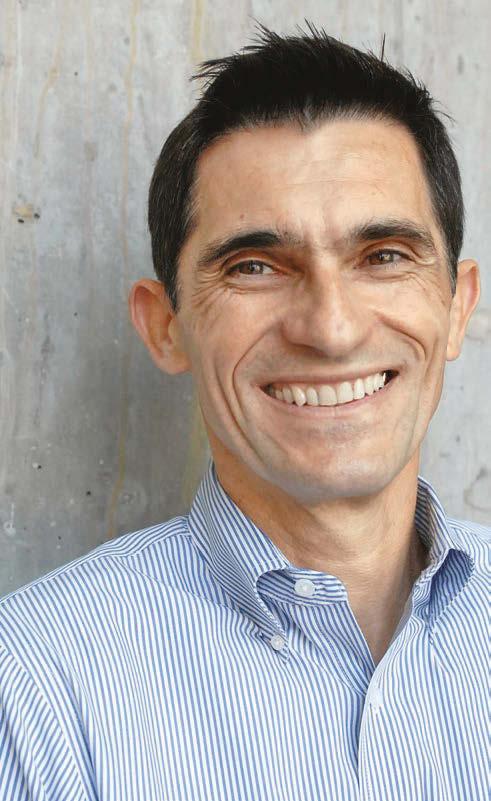
2010 Events @ LIDS
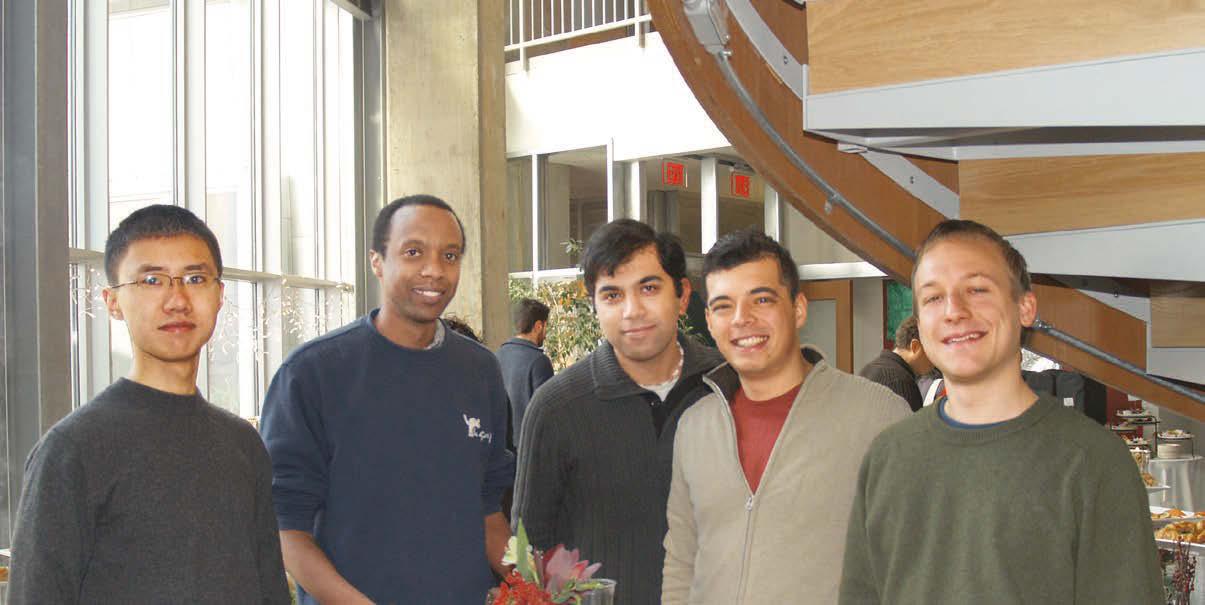
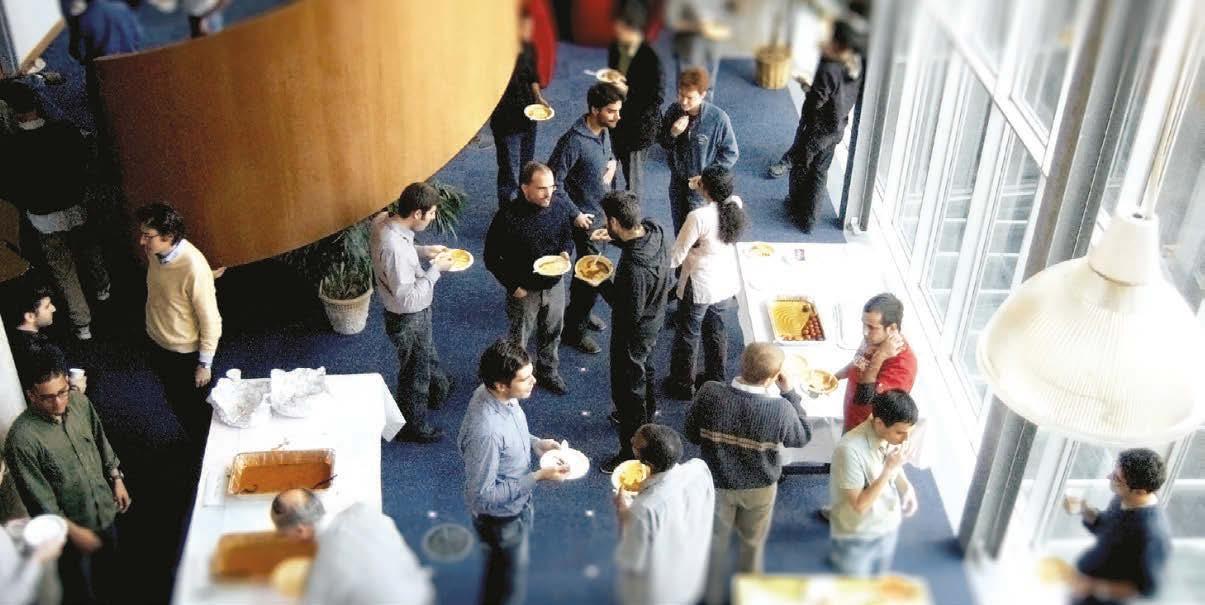
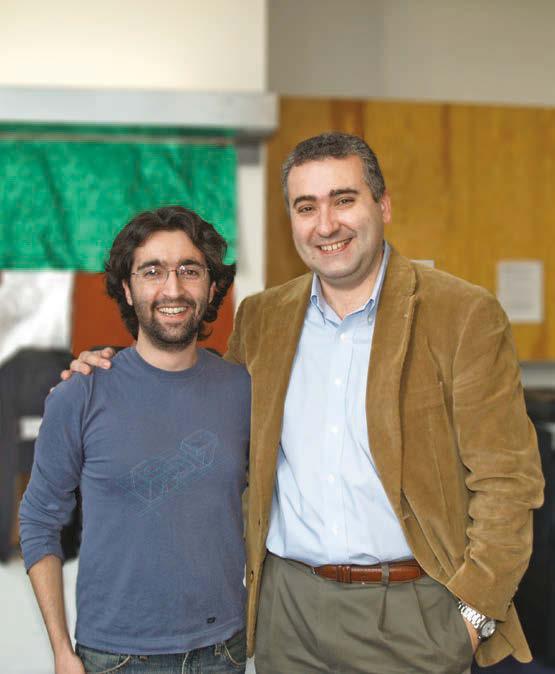
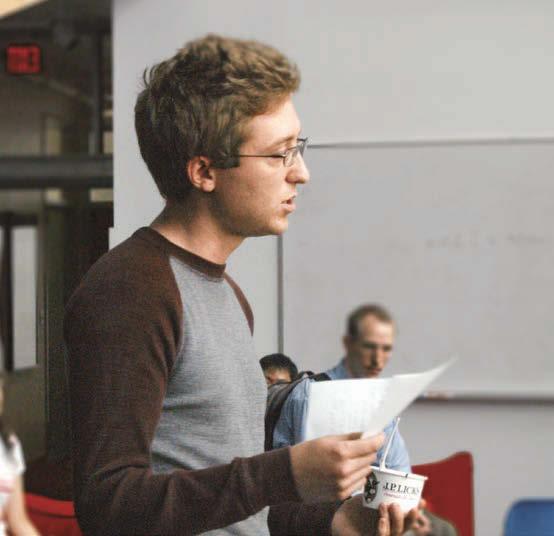
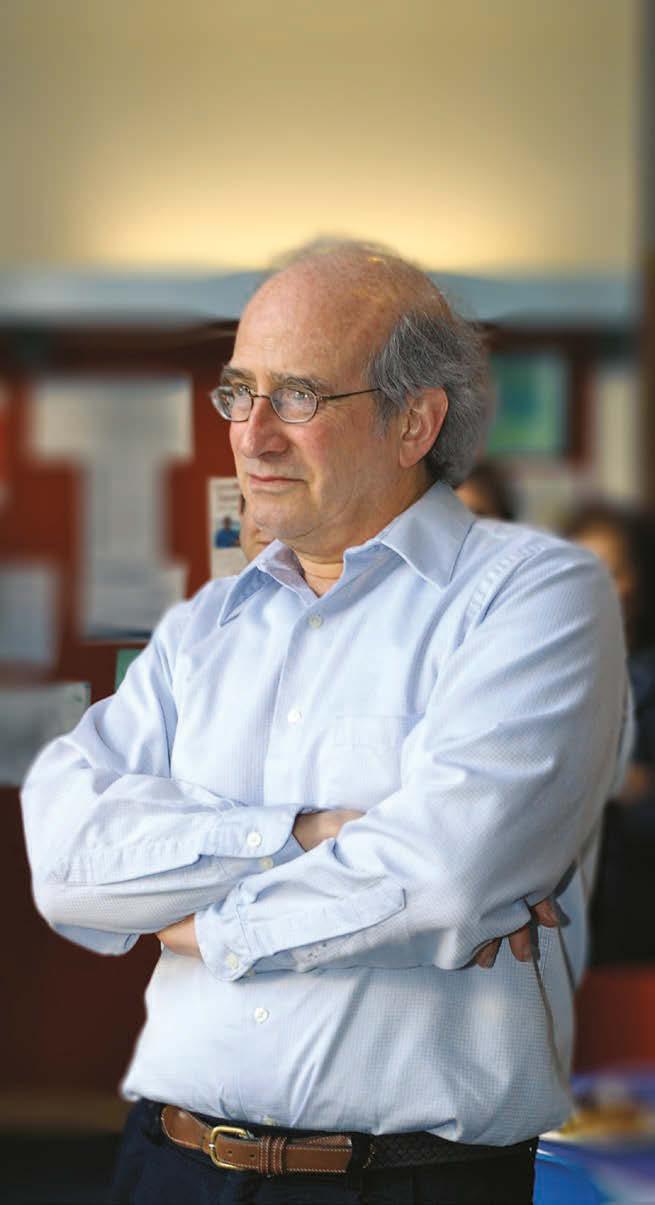

Minding the Gap
By Jennifer Donovan
LIDS research scientist Mardavij Roozbehani spends his days doing what he loves best: pursuing his ideas, taking pleasure in learning, and working to solve challenging and exciting research problems. LIDS has been his intellectual home for many years – he’s been here as a graduate student and a postdoctoral researcher – and though he regards industrial research highly, he values the freedom of choice found in academic research. What he’s doing with that intellectual freedom right now is working with his colleagues to address one of the big questions of the future: how do we design and operate the next generation of electricity networks in a way that brings about the desired environmental, economic and social benefits? It is a complex problem to work through, but Mardavij is energized by the challenge. “Power systems are very unique and interesting because there is real-time interaction between economics and physics, and the system is safety-critical, with strict specifications and little flexibility. The upcoming changes make these systems only more interesting and more challenging.”
Much of the developed world is on the verge of a whole new energy generation and consumption paradigm—a power production system that deploys renewable resources
on a large scale, and a consumption system that is interactive and responsive. Many researchers are working on creating new and more efficient energy generation and storage technologies—improving the ways in which solar cells capture the sun’s energy or wind farms convert wind power to electricity— Mardavij, however, is working on systemlevel problems that arise when all the new technologies need to be linked together to create a smoothly functioning system. “The system operation paradigm will change at all levels of transmission and distribution, so will the way electricity markets are run and operated,” says Mardavij. One of the principal issues at hand is the level of uncertainty the renewable energy sources introduce into the system. Since the energy supplied is from an intermittent source, how can we ensure the exact amount of power we need will be there exactly when we need it? To do that, the new system will need to be much more responsive to real-time events and changes in the state of the grid. It will take advantage of information technology and real-time communication between energy producers, energy consumers, and system operators to, among other objectives, mitigate the effects of these uncertainties.
“Consider dynamic pricing and demand response for instance,” says Mardavij. “This means that the consumers would—based on a price signal they receive, for example, via a smart meter installed in their home—ramp up or ramp down their usage, save a little money, and help the environment.” For customers who are more environmentally conscious than they are price sensitive, the signal might also reflect the environmental impact of power use, perhaps in terms of real time CO2 emissions. “The hope is, roughly speaking, to reduce the discrepancy between the total consumption and total renewable generation. And as for the gap that remains, you have to cover that gap with reserve capacity supplied by conventional resources, or maybe storage someday. You want the gap to be minimal, so as to minimize the use of fossil-based energy sources.”
In a power grid, at every instant of time, supply and demand have to match precisely, and this is mostly managed by the transmission system operators. Today’s system is in a sense an open loop system in which the consumer is a passive agent, with limited means to affect the system and fairly predictable consumption patterns. The future system, however, will incorporate real-time pricing and renewable
energy generation and storage at the level of consumers—large or small. For example, a typical consumer might have solar panels on her house. Sometimes her home solar generation system won’t meet her needs and she’ll need to draw from the grid. Sometimes she’ll have a power surplus and want to sell that extra power back to the grid. And there will be thousands or hundreds of thousands of consumers just like her—unpredictable agents with access to a string of new levers to interact with the power grid. One aspect of Mardavij’s work involves researching different system operation schemes. A potential solution involves several local control centers that supervise and coordinate the agents within their areas. That way the local control center could coordinate the interactions between each user and the local grid, in a sense analogous to how a transmission system operator works with big power plants.
“At a very high level, what I’m interested in is the sense of what the system architecture should be,” said Mardavij, “and by that, I mean questions like how much autonomy should be given to different agents at various levels, what kind of information should be collected and to whom it should be given, how useful different types of information would
be, what should the geographical distribution of the local control centers be, what do they need to communicate, and how can they coordinate between themselves and with the transmission system operator?”
The idea of a smart grid is still an evolving concept and it will likely remain so for a while. This, says Mardavij, poses unique challenges to researchers. “It’s important to formulate problems at the right level of abstraction, so as to be relevant but perhaps not too specific. When possible, I try to model and analyze the trade-offs between a range of scenarios, rather than focus on a very specific scenario which would make a lot of sense, but might never materialize because policymakers, or evolution of technology or economics dictate something else.”
The growing importance of energy has been on Mardavij’s mind since his undergraduate days. His interest in energy systems didn’t turn into practice, however, until he learned that professors Sanjoy Mitter and Munther Dahleh were forming a research group around the topic. When he heard about the opportunity, he was certain he wanted to come on board. Mardavij wasn’t always so sure of his path, though. “Wanting to become
an academic researcher was more like an evolutionary process. As a kid, I admired professional athletes a lot,” said Mardavij, “For a while in my teens I wanted to become a professional basketball player! It took me a while to realize that that just wasn’t in the genes!” Though basketball remains a passion, Mardavij loves the path he’s chosen and is happy to be working on important issues and about the positive environmental impact his work could have.
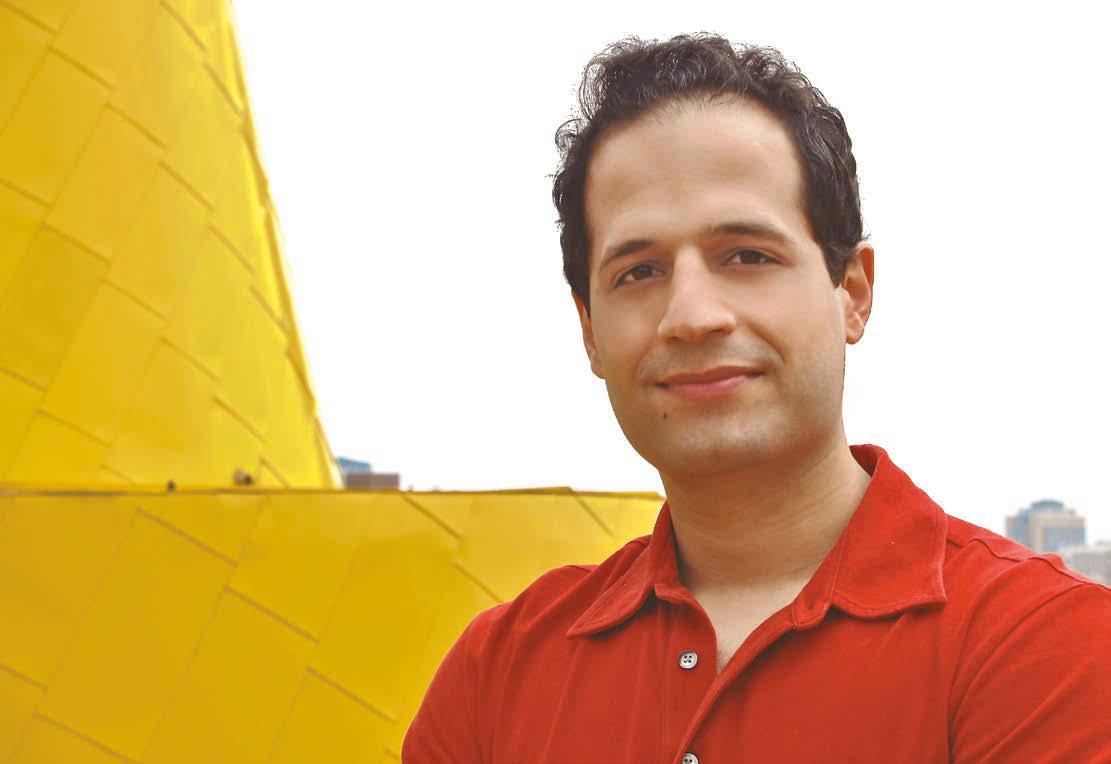
Sound Bites: Jennifer Donovan
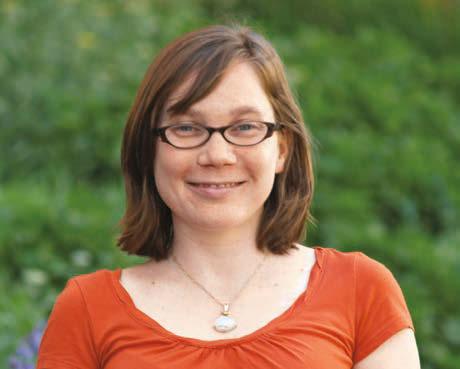
What
do you do at
LIDS?
I’m the Administrative Assistant to the Director, Alan Willsky. So what that means is that I’m kind of a “Jill of all trades.” I do everything from making sure we have enough copy paper and seeing that the clocks have batteries to managing some budgets, event planning and coordination, and special project work (like LIDS/All).
How long have you been with the lab?
I’ve been at LIDS for almost three years. I moved back to Boston from New York to do Harvard’s post-baccalaureate pre-health program and I was looking for work that would accommodate someone who was also in school. I talked to a placement agency
and they said “How about MIT?” I said “that sounds great!” I interviewed with Doris Inslee, a much beloved administrator who is now retired. She hired me and I’ve been here ever since.
Are you still in the pre-health program?
I’m taking the semester off right now because I’m not convinced that that’s what I want to do. I’ve got lots of ideas and that’s the hard part. Cultural anthropology is in the lead, but the field is wide open, so I’m in the process of evaluating that to figure out what the next step will be.
What do you enjoy about working at
LIDS?
The people, first and foremost. It’s a warm supportive environment here with just a large number of great people, all in one spot.
Before I came to LIDS, I was the managing director of an arts organization – it was a small, start up, non-profit. When I came to LIDS I realized that working with artists and working with professors is a lot alike. The creative energy is very similar: you’ve got a lot going on, and people making things happen all the time. In a sense, working with artists
helped prepare me to work with professors. There’s a ton of creative problem solving, and drawing together of disparate things.
What do you do outside of work?
Well until recently what I did outside of work was go to school, and that’s all I had time for-plus the odd bit of socializing with my friends. But lately I’ve been able to indulge a bit and do other things I enjoy, like reading good books and watching films. I’m a big fan of the Institute of Contemporary Art, and I’ve been able to reconnect with that part of me that still very much loves the arts.
Do you have any favorite books or films?
That’s a great question. Oh shoot. Well I just read Lorrie Moore’s new book, and I really like her. She’s a very intelligent writer. Film? That’s too big. Usually the more arty, independent kind of things. For instance, I love “The City of Lost Children”, which is not everybody’s cup of tea, but I think it’s phenomenal.
What was your impression of LIDS when you first got here?
When I got here it was the building that hit me. I was excited, and I thought “Really? I can work in an architectural marvel?”
[Laughs] Honestly, it took me a little while to figure out what exactly LIDS was and how it fit into things. The work itself applies to so many different things – economics, biology, engineering – that a lot of different people and different fields are pulled in. I feel like it’s a meeting ground of people with common interests. They have other affiliations, but their home is here. That’s not a technical definition, of course!
Do you have a favorite moment from working at LIDS so far?
It’s actually been a really interesting year to be at LIDS. For instance, we had this huge symposium in November—the Paths Ahead Symposium. It brought together over 300 people from all around the world, and it was really neat to see people working together on behalf of LIDS, getting really excited about the lab, thinking about the future of the field. For me, it was a unique opportunity to get a sense of the context of the lab in the field. So although I have a very small sense of the technical things that we do, I now have a much better sense of the community in which we operate. It was pretty cool to be part of that energy.
Paths Ahead Symposium


LIDS is proud to have hosted the Paths Ahead in the Science of Information and Decision Systems symposium. The symposium, which was held November 12-14, 2009, was a great success, bringing together over 340 participants from around the world and featuring many of the most recognized names in the field.
Paths Ahead aimed at articulating a picture of the challenges and ideas that will shape the future directions of research in the science of information and decision systems. It was composed of a series of outstanding and thought-provoking panel sessions on control and optimization, networks and information, and inference and learning, as well as a plenary address by Sanjoy Mitter and a tour of the history of LIDS by Alan Willsky.
The symposium web site is http://paths.lids.mit.edu/. Here you can find the full schedule of events held, videos of the symposium sessions, event photos, presentation slides, and more.
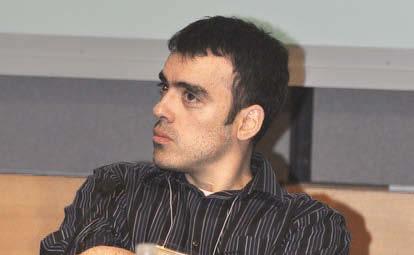
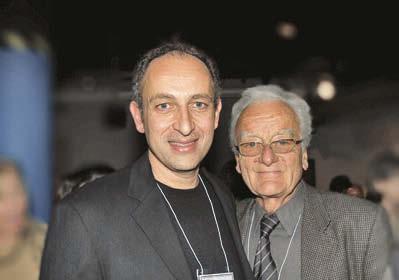
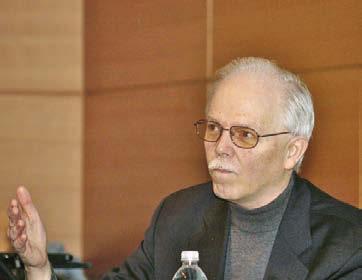
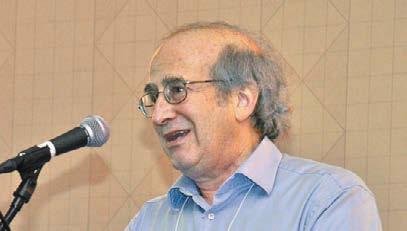
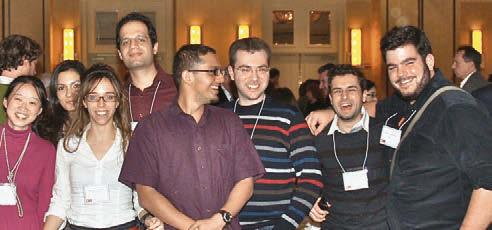
Symposium Speakers
Karl Johan Åström
Albert Benveniste
Dimitri Bertsekas
Vince Blondel
Stephen Boyd
Roger Brockett
Munzer Dahleh
John Doyle
Keith Glover
Al Hero
Y.C. (Larry) Ho
Jon How
Mike Jordan
Thomas Kailath
Petar Kokotovic
Sanjeev Kulkarni
P.R. Kumar
Tom Magnanti
Sanjoy Mitter
Richard Murray
Asu Ozdaglar
Pablo Parrilo
Pietro Perona
H. Vincent Poor
Balaji Prabhakar
Devavrat Shah
Jeff Shamma
David Tse
John Tsitsiklis
Pravin Varaiya
Martin Waiwright
Jan Willems
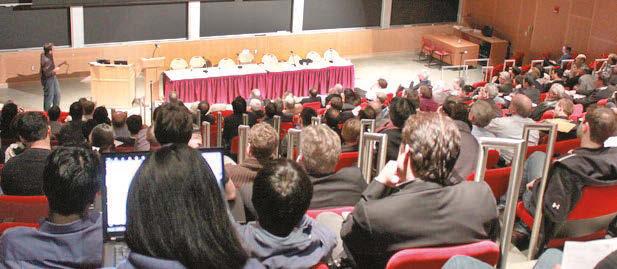
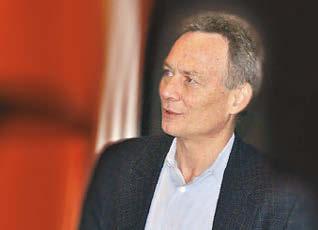
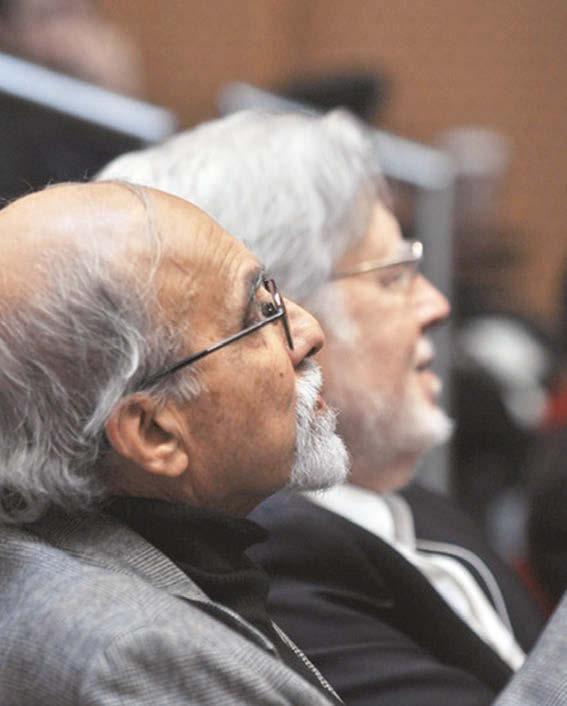
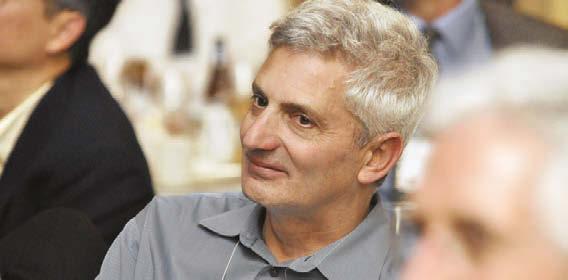
LIDS Colloquia
& Seminars 2009-2010
Weekly colloquia & seminars are a highlight of the LIDS experience. Each talk, which features a visiting or internal invited speaker, provides the LIDS community an unparalleled opportunity to meet with and learn from scholars at the forefront of their fields.
The Stochastic Systems Group seminar schedule can be found at: http://ssg.mit.edu/cal/cal.shtml
Stephen Boyd
Stanford
Electrical Engineering
Babak Hassibi
Caltech
Electrical Engineering
Jon Kleinberg
Cor nell
Computer Science
Rudolf Kalman
Swiss Federal Institute of Technology Mathematics
Partha Niyogi Univ. of Chicago
Computer Science
SRS Varadhan Courant Institute Mathematics
Asuman Ozdaglar
MIT LIDS
Michel Goemans
MIT Mathematics
Jan Willems
K.U. Leuven
Electrical Engineering
PR Kumar
Univ Illinois, Urbana-Champaign
Electrical & Computer Engineering
Keith Glover Univ. of Cambridge
Engineering
Francois Baccelli
INRIA
Research Director
Sae-Young Chung KAIST
Electrical Engineering
John Lafferty CMU
Computer Science
Santosh Vempala Georgia Tech
Computing Science & Systems Division
David Mindell
MIT
Aeronautics & Astronautics
Naomi Leonard Princeton
Mechanical & Aerospace Engineering
Cedric Langbort UIUC
Aerospace Engineering
Amir Beck Technion
Industrial Engineering & Management
Pierre Lermusiaux MIT
Mechanical Engineering
William Helton UCSD Mathematics
Ruth Williams UCSD Mathematics
LIDS News & Honors
Congratulations to our members for the following achievements!
Prof. Dimitri Bertsekas received the 2009 INFORMS Expository Writing Award.
LIDS Administrative Officer Debbie Deng was promoted to LIDS’ Assistant Director for Administration.
Emily Fox was named as the inaugural recipient of the EECS Jin-Au Kong Outstanding Doctoral Thesis Prize. Emily also received the Savage Award for Applied Methodology in Bayesian Statistics - this is given for a Ph.D. dissertation that makes outstanding contributions in Bayesian econometrics and statistics.
Pavithra Harsha received honorable mention in two dissertation award categories at INFORMS 2009 for her thesis “Mitigating Airport Congestion: Market Mechanisms and Airline Response Models”: Aviation’s Application Dissertation Prize, and Transportation Science and Logistics Dissertation Prize.
Julien Hendrickx , along with co-authors Changbin Yu, Baris Fidan, and Brian D.O. Anderson won the award for Best Paper of the Asian Journal of Control for the 2006-2008 period.
Prof. Jon How was named the next Richard Cockburn Maclaurin Professor.
Dan Iancu was awarded the INFORMS Optimization Society Student Paper Prize. Dan was also awarded the IBM Goldstine Fellowship in February 2010. He is jointly supervised by Prof. Dimitris Bertsimas and Prof. Pablo Parrilo.
Prof. Patrick Jaillet became Co-Director of MIT’s Operations Research Center.
Raphael Jungers received the IBM Belgium 2009 Award for a Ph.D. contributing to the theory of computer science.
The Best Paper Award at the IEEE Global Communication Conference (Globecom), 2009 was awarded to Stefano Maranò, Wesley Gifford , Henk Wymeersch and Prof. Moe Win for their paper “Nonparametric Obstruction Detection for UWB Localization”.
Jinwoo Shin and Shreevatsa Rajagopalan (supervised by Prof. Devavrat Shah) received the Kenneth C. Sevcik Best Student Paper Award at the ACM Sigmetrics/Performance 2009 conference for their work on efficient medium access algorithm.
Prof. John Tsitsiklis delivered the Applied Probability Society Markov Lecture at the INFORMS Annual Meeting (October 2009).
Prof. Alan Willsky was elected to the National Academy of Engineering. Prof. Willsky was also the recipient of the 2010 IEEE Signal Processing Society Technical Achievement Award.
